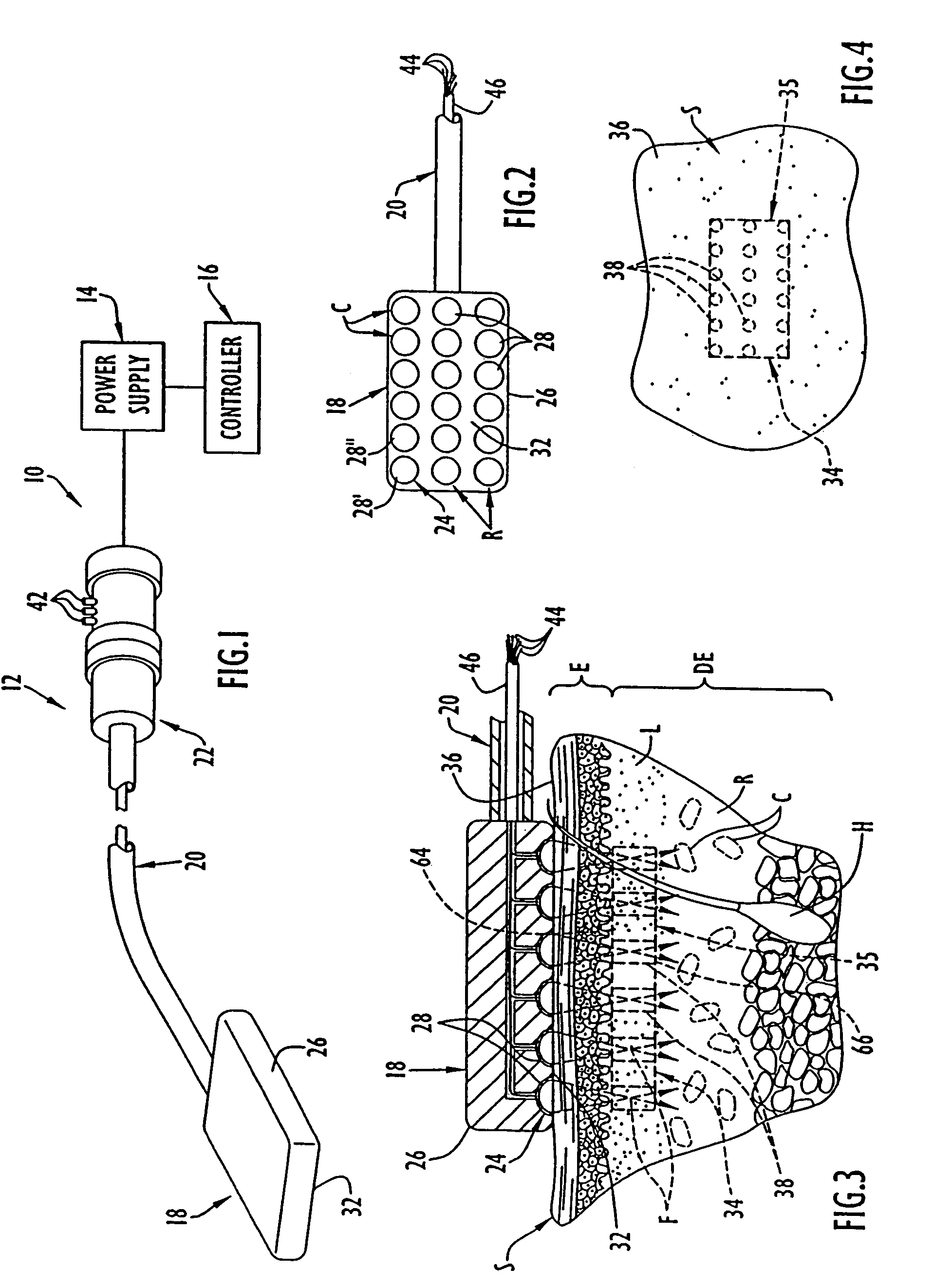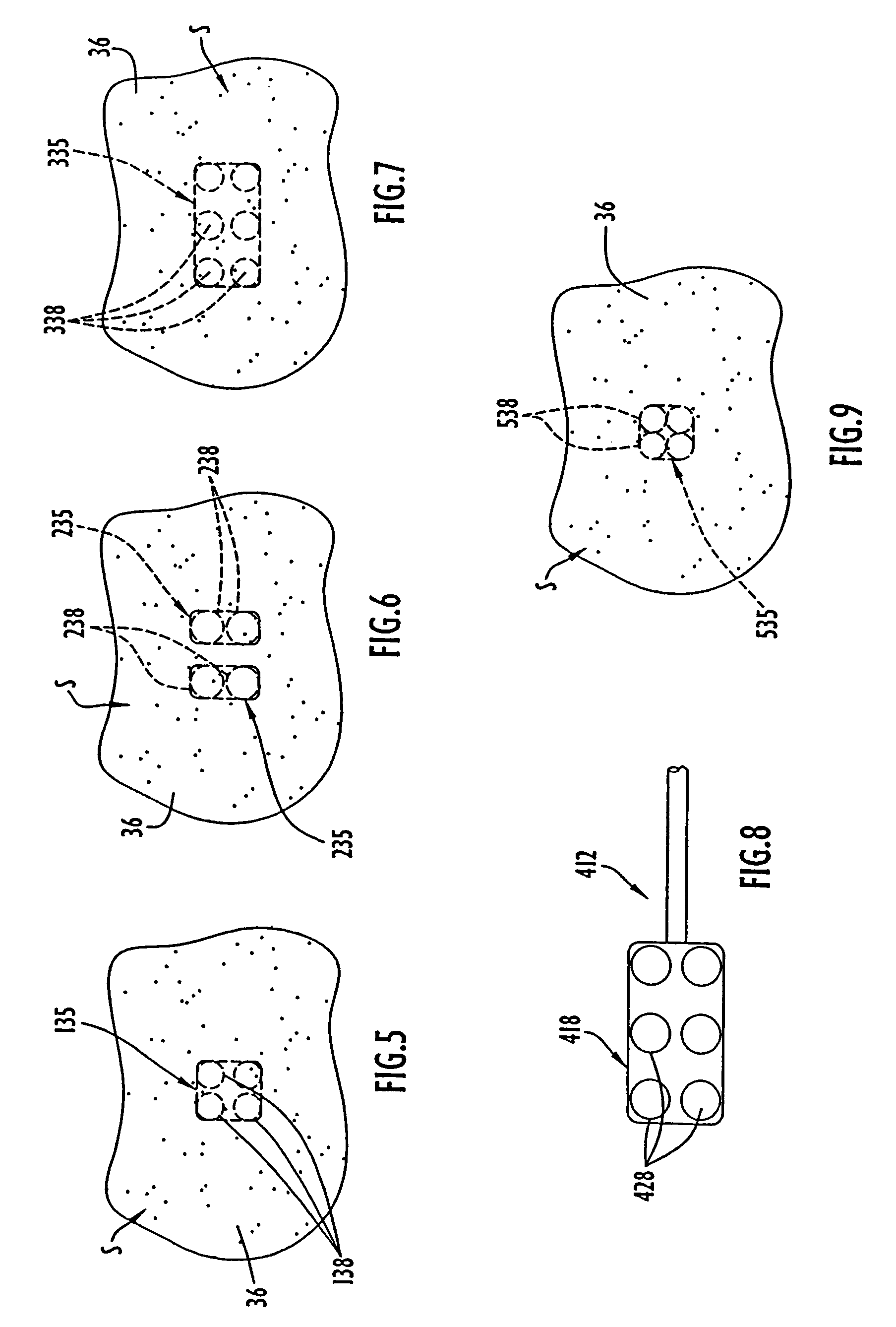Methods of using high intensity focused ultrasound to form an ablated tissue area
a tissue area and ultrasound energy technology, applied in ultrasonic/sonic/infrasonic diagnostics, applications, therapy, etc., can solve the problems of coagulative necrosis, complex surgical maze procedure, and limited depth, so as to facilitate positioning, manipulate, stabilize and/or hold an organ. high intensity
- Summary
- Abstract
- Description
- Claims
- Application Information
AI Technical Summary
Benefits of technology
Problems solved by technology
Method used
Image
Examples
Embodiment Construction
[0058]A high intensity focused ultrasound ablation or stimulation assembly or system 10 for use in the methods of the present invention is illustrated in FIG. 1 and is similar to the high intensity focused ultrasound stimulation assembly described in prior U.S. patent application Ser. No. 10 / 464,213 and U.S. patent application Ser. No. 10 / 600,871, the disclosures of which are incorporated herein by reference. The high intensity focused ultrasound ablation or stimulation assembly or system 10 includes a focused ultrasound ablation or stimulation device 12, a power supply 14 and a controller 16. The focused ultrasound ablation or stimulation device 12 is similar to that described in U.S. patent applications Ser. Nos. 10 / 464,213 and 10 / 600,871 and includes a focused ultrasound emitting member 18, an elongate handle shaft or body 20 having a distal end at which the ultrasound emitting member is disposed and a handle or handpiece 22 coupled to a proximal end of the handle shaft 20. As sh...
PUM
 Login to View More
Login to View More Abstract
Description
Claims
Application Information
 Login to View More
Login to View More - R&D
- Intellectual Property
- Life Sciences
- Materials
- Tech Scout
- Unparalleled Data Quality
- Higher Quality Content
- 60% Fewer Hallucinations
Browse by: Latest US Patents, China's latest patents, Technical Efficacy Thesaurus, Application Domain, Technology Topic, Popular Technical Reports.
© 2025 PatSnap. All rights reserved.Legal|Privacy policy|Modern Slavery Act Transparency Statement|Sitemap|About US| Contact US: help@patsnap.com



